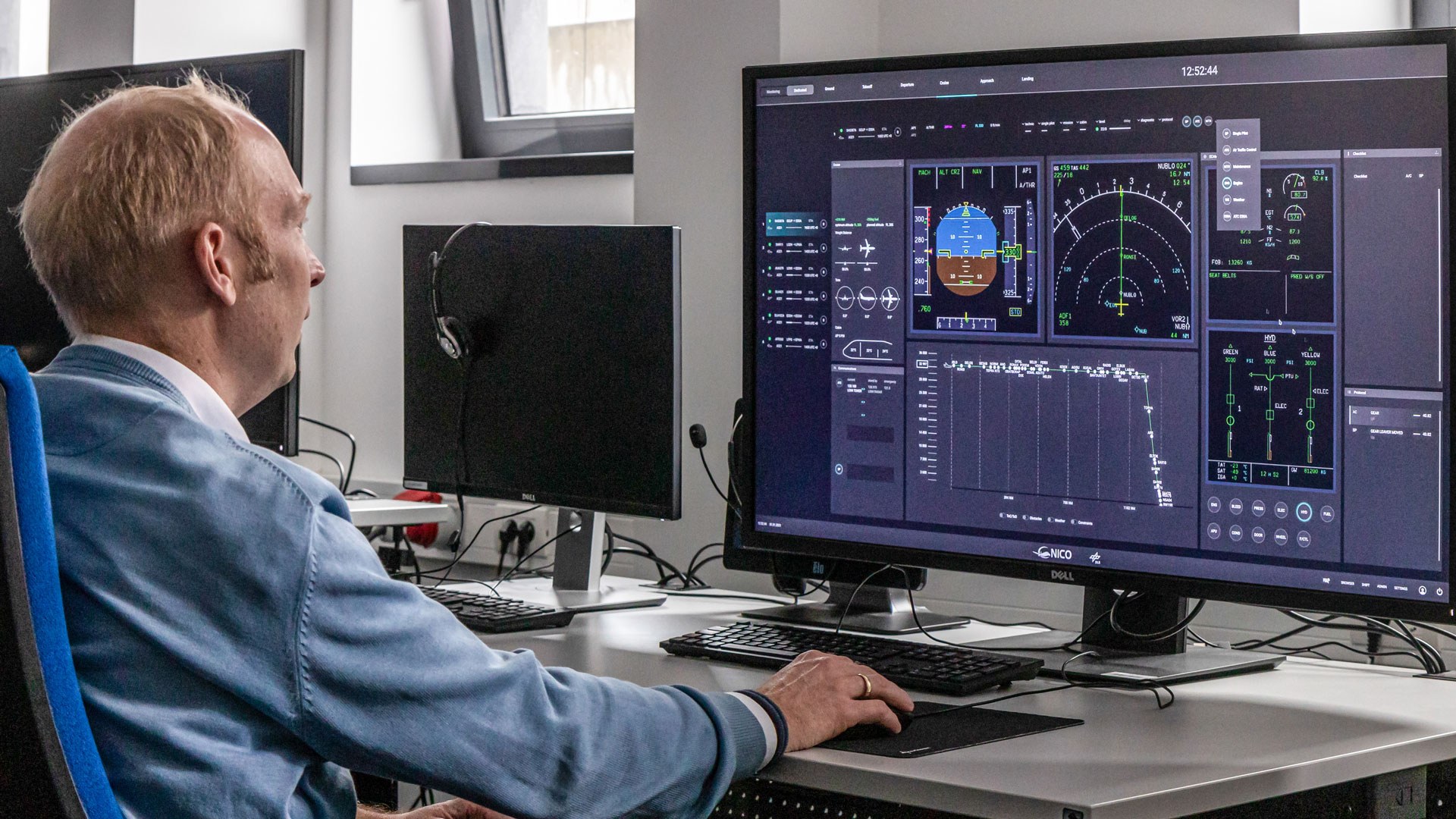DLR researches support to commercial aircraft from co-pilots on the ground

In the future, could a co-pilot on the ground remotely support up to eight aircraft in the air at the same time? Researchers in the 'Next Generation Intelligent Cockpit' (NICo) project are addressing these and similar questions as they investigate the concept and architecture of a future, highly automated flight deck. At the end of 2023, active commercial pilots tested a newly developed workplace for remote co-pilots in simulator studies.
Since 2020, as part of the DLR 'NICo' project, researchers have been researching the future single-pilot operation of commercial aircraft and are also investigating the possibility of a newly developed remote co-pilot – one who accompanies the flight from the ground and supports the pilot in the air. In the short term, the research results should help to streamline the work and increase safety, even in today's two-pilot operations.
As an independent research organisation, DLR is investigating and examining this controversial topic in an independent and scientifically neutral manner. The concepts being developed in the research project are regularly presented to both the aviation industry and representatives of pilot associations as an external advisory body.
Several remote co-pilots support entire fleet from one centre
A remote co-pilot is responsible for several aircraft simultaneously in single-pilot operations. Several such remote co-pilots are then to work together in a 'remote pilot centre', from where they provide ground support for an entire fleet of aircraft. NICo is also looking at issues relating to the optimal design of the remote centre, aircraft handovers between co-pilots and emergency procedures. In collaboration with Osnabrück University of Applied Sciences, the NICo project has involved the design of the operating concept and user interface for optimum work support in this highly safety-critical area and its implementation at DLR.

The use of a remote co-pilot requires a rethink of classic flight deck layouts in aircraft as well as consideration of the necessary control station for the co-pilot on the ground. The focus here is on research into future human-machine interfaces and the development of optimised procedures. These are not only being developed for single-pilot operations in the long term but are also intended to reduce the workload in current two-person flight decks.
Concept and developed system tested in extensive simulation campaign
In November and December 2023, after intensive preparations, investigations looked into whether the newly developed 'Remote Co-Pilot Station' and airline pilots could accompany and support up to eight commercial aircraft simultaneously from the ground. The concepts developed in the project gained a very high level of acceptance thanks to the many iterations with pilots.

In several flight scenarios, test participants were confronted with a series of challenges that required both a good overview of the airspace and an understanding of the immediate situations of each aircraft being supported. It showed that it is entirely realistic, under certain boundary conditions, for a pilot to look after up to eight commercial aircraft at the same time.
If problems occur, the NICo concept provides additional one-to-one support from a remote co-pilot on the ground to any affected aircraft. To do this, the station developed provides an extended user interface that can be used, for example, to solve technical problems together, in a similar way to current crew coordination concepts.
Pilots positively surprised
The test participants, some of whom were initially very sceptical, were positively surprised by the station. The operating concept and the functions provided were convincing. The study is currently being analysed further and the findings will be incorporated into the ongoing development of the project.
The research carried out in the NICo project represents an important milestone for safe research into the future single-pilot operation of aircraft. As a research organisation, DLR has a diverse scope, with experts that can work in all directions; not only looking at the technical risks and possibilities, but the human factor when it comes to training, and a future workplace also plays an important role.
The entire project team is currently preparing the third study planned for 2024. Together with the DLR Institute of Flight Systems, the full-motion simulator AVES will be integrated into the study and complex flight situations will be tested in both multi-pilot and single-pilot scenarios.
